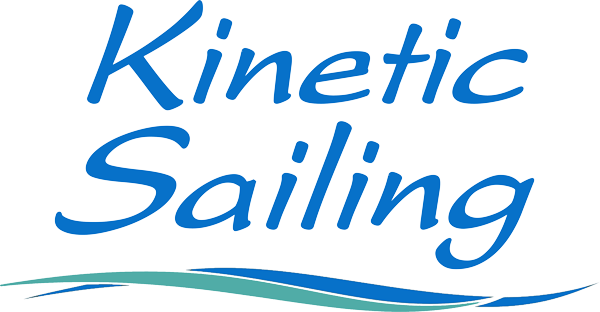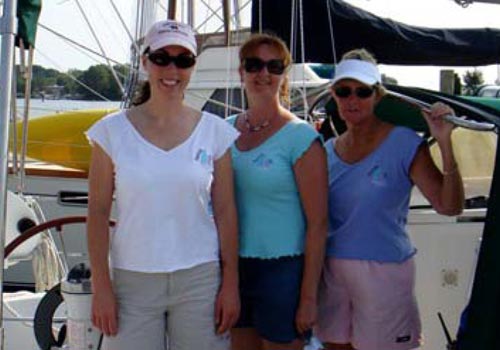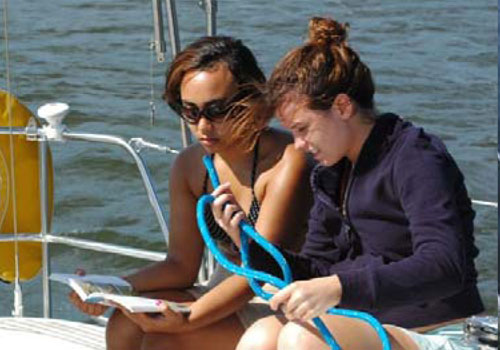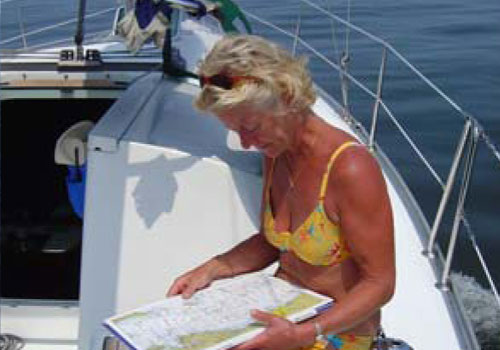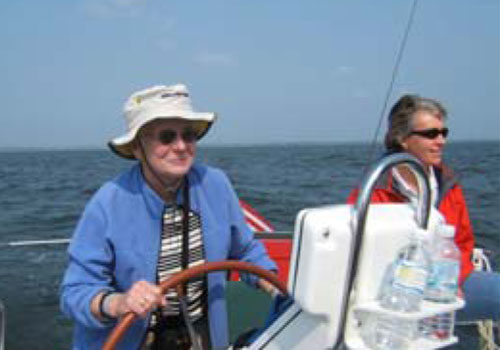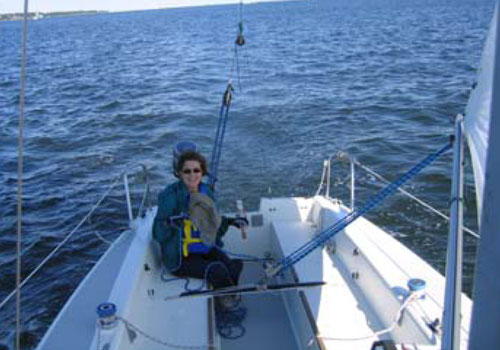By Capt Lisa Batchelor Frailey
I love packing for vacation—it puts me in the vacation mindset! Conversely, my husband absolutely dreads packing; he waits till the last minute to get it over with as fast as possible. With a little advance planning, packing for a Caribbean bareboat charter can be quick, simple and enjoyable—the best of both worlds!
Today’s lightweight, fast-drying technical fabrics make the packing even simpler. You’ll be appropriately attired, comfortable and still have space left in your duffle for a souvenir tee shirt. Read on for the packing basics for Caribbean bareboat charter, followed by a handy Packing List.
Charterers invariably pack too much for a Caribbean vacation. I remember seeing the 3 duffle bags my brother packed for his first charter—I didn’t think he owned that much clothing! When I saw him unpack, I realized that most of it was fishing gear and provisions; his clothing amounted to 3 tee shirts and 2 pairs of shorts. A general rule of thumb: lay out what you think you’ll need on your bed, and consider critically if you’ll need each item. Put half the clothing back in your closet. Look again at your clothing pile, and reduce by half again. You’ll be all set! As a general guide:
Swimsuits
While onboard, you’ll practically live in a swimsuit. Bring 2 or 3 for variety (and changing tan lines), add a cover-up for sun protection and modesty.
Shirts
Bring 3-5 favorite tees or polo shirts. While cotton is comfortable, it doesn’t dry easily in tropics. Fast-drying technical fabrics allow you to quickly wash your shirts in a bucket, so they can dry on the lifelines. You’ll probably buy 1 or 2 souvenir tees along the way anyway.
Shorts
Bring 2-3 pair of comfortable, fast-drying shorts. Zippered pockets retain cash or credit cards during dinghy rides or excursions ashore.
Underwear
As appropriate.
Sun protective clothing
If you’re sun-sensitive, bring a fast-drying long-sleeved shirt and long pants, preferably with Ultraviolet Protection Factor integrated into the fabric. To save more space, wear these on your flight to and from the Caribbean, so you’re not lugging winter clothes onboard.
Fleece
You’ll welcome a lightweight fleece or sweater on cooler evenings. You’ll be even happier if you don’t need it until your return flight!
Ashore
Daytime beach wear is very casual, and your onboard clothing will be fine. But if you’re shopping in town, respect local traditions and dress accordingly. When visiting churches or museums, covered knees and shoulders may be required. Ladies, a pair of capris or a sarong are invaluable. Most restaurants you’ll encounter when chartering are casual; pack casual slacks/shirts (men), and a capris/skirt/sundress (ladies) for evenings at restaurants. Higher-end resort restaurants require a jacket & tie for men; if you’re planning to dine here, check the dress code and pack appropriately. Before packing your best silks or cute heels, keep in mind that you’ll likely be scrambling into a rubber dinghy when going ashore!
Shoes
Non-marking, close-toed shoes (boat shoes/Keens/Crocs) are best for wearing on deck—they give you good traction while protecting your feet. Bring water shoes or sandals for wearing ashore. Try to keep sand off the boat by rinsing “shore-side” shoes before reboarding your boat. Bare feet only below decks!
Rain Jacket
As with the fleece, you may be happy to never have to wear this on vacation. But in the event of tropical showers, squalls, or head-on seas, you’ll be very glad you have a lightweight, breathable rain jacket!
Hat
Important sun protection—ballcap, visor, sailing hat—whatever you’re most likely to wear. A chin-strap or tie-down clips are critical when sailing!
Sunglasses
Good-fitting sunglasses will protect your eyes from all that tropical sunshine. Bring a spare pair, just in case. Polarized lenses cut the glare and allow you to distinguish coral reefs under water. Retainer straps will help keep your sunglasses on your head, instead of overboard! For the over-40 crowd, consider magnified “cheater” sunglasses available in many pharmacies. You’ll be able to read charts or a novel while still protecting your eyes from the sun.
Sailing Gloves
If you wear them while sailing in home waters, bring your sailing gloves along.
Personal Flotation Device (PFD)
Charter yachts will come equipped with PFDs (probably Type I or II), but if you prefer to wear your own, bring it along. Check airline regulations if carrying a CO2 cylinder for a Type V PFD.
Toiletry/Wash Kit
To your normal compliment of products, add salt-water soap and a bathing puff (which foams up most liquid soaps). Leave the hair-dryer at home; it’s unlikely to work onboard, and you’ll ruin that sought-after windswept look!
Towels
Most charter companies provide cotton bath towels, but microfiber sports towels are more absorbent, quick-drying, and easily packable. Beach towels are generally not provided.
Sunscreen
Bring plenty of high-UPF sunscreen and lip-balm, and apply liberally each day onboard. You’ll still get plenty of sun!
Medications
Bring necessary medications in your carry-on luggage, with copies of appropriate prescriptions. Unless you’re SURE you don’t get seasick in the conditions in which you’ll be chartering, bring seasickness medication. Check with your doctor, and try the meds in controlled conditions before your charter.
Personal Gear
Camera, phone, small flashlight, books, magazines. Tablets or iPads keep you connected, and have great sailing and navigation apps. A watch or travel alarm will help you make the flight home, and remind you that your colleagues are still at work. See our post ‘What to pack – beyond clothing‘ for a more detailed guide!
Duffle
Pack everything in a soft, collapsible duffle, which can be stowed easily. There is no room onboard for hard or wheeled suitcases! Also bring a lightweight beach bag/backpack for going ashore.
Documents
Don’t forget your Passport (is it current?) and appropriate Visas. Bring your sailing logbook and Charter Documentation. ATMs are easy to find; bring a credit and/or debit card with PIN for cash advances.
When packing for a Caribbean bareboat charter, remember—keep it simple, keep it light! Follow these guidelines, and have a terrific vacation! Check our other post for: “What to Pack—Beyond the Clothing.”
Packing Checklist
1-week Caribbean Barefoat Charter
– Swimsuits (2-3) & cover-up
– Shirts—tees, polo shirts, sun-shirts (3-5)
– Shorts—quick-dry, zippered pockets (2-3)
– Underwear—as appropriate
– Quick-dry long pants, long-sleeved shirt (UPF)
– Fleece or lightweight jacket
– Evenings ashore: Ladies: capris, top, sundress/Gents: lightweight slacks/shorts, shirt
– Shoes/onboard—non-slip, non-marking, closed-toed (eg. deck shoes, Crocs, Keens)
– Shoes/ashore—sandals, water shoes
– Rain jacket—hooded, lightweight, breathable
– Hat—ballcap, visor, or sun hat (tie-down)
– Sunglasses (polarized if possible), retainer strap. Bring a spare pair.
– Sailing gloves
– PFD (for those who prefer their own)
– Toiletry / wash kit
– Micro-fiber sports towel / beach towel
– Sunscreen & lip balm (30+ UPF, waterproof)
– Seasickness medication—as required
– Personal LED flashlight (small) or headlamp
– Travel alarm clock—if it matters!
– Camera, phone, tablet, books, magazines
– Duffle bag (soft, no frame)
– Passport (if overseas)
– Debit or credit card, with PIN for cash advances
– Sailing logbook
Link to original article: http://www.asa.com/enewsletter/oct2010/bareboat_charter_essentials.html
